NIL
Kentucky moved into ESPN’s Top 25 after final NBA draft decisions
Now that all of the NBA draft decisions have been made, updates are being made to the early college basketball rankings. Today, ESPN.com adjusted its preseason top 25 to reflect the final roster movement around the sport. Kentucky fared well in ESPN’s reordering of its top teams, mostly due to the return of Otega Oweh […]

Now that all of the NBA draft decisions have been made, updates are being made to the early college basketball rankings. Today, ESPN.com adjusted its preseason top 25 to reflect the final roster movement around the sport. Kentucky fared well in ESPN’s reordering of its top teams, mostly due to the return of Otega Oweh for his senior season in Lexington. The Wildcats climbed from No. 11 to No. 9 in the new ranking.
Here’s what author Jeff Borzello said of the Wildcats’ new ESPN ranking:
Kentucky is absolutely loaded on the perimeter next season, with the arrivals of transfers Jaland Lowe (Pitt), Kam Williams (Tulane) and Denzel Aberdeen (Florida) and five-star prospect Jasper Johnson, to go along with the return of leading scorer Otega Oweh and reserve Collin Chandler.
Mark Pope also revamped the frontcourt with defense in mind, with the additions of Mouhamed Dioubate (Alabama) and Jayden Quaintance (Arizona State). Quaintance could miss time after suffering a torn ACL in late February, so a step forward from Brandon Garrison will be needed.
Projected starting lineup
Jaland Lowe (16.8 PPG at Pitt)
Denzel Aberdeen (7.7 PPG at Florida)
Otega Oweh (16.2 PPG)
Mouhamed Dioubate (7.2 PPG at Alabama)
Jayden Quaintance (9.4 PPG at Arizona State)ESPN.com
Up top, Purdue, one of UK’s preseason opponents, is the No. 1 team in ESPN’s preseason top 25. Defending champ Florida, Houston, UConn, and St. John’s round out ESPN’s top five.
[How NBA draft withdrawal moved our early NCAA top 25 rankings]
Kentucky is also ninth at The Athletic
Over at The Athletic, CJ Moore’s new preseason poll also ranks Kentucky at ninth in the country. Moore writes that he is “intrigued by Kentucky’s frontcourt” and that the Wildcats will contend for a title if Jaland Lowe reaches all-league caliber at point guard:
Projected starters: Jaland Lowe (transfer) Denzel Aberdeen (transfer), Otega Oweh, Andrija Jelavic (international), Jayden Quaintance (transfer)
Notable returners: Brandon Garrison, Collin Chandler, Trent Noah
Other newcomers: Mouhamed Dioubate (transfer), Kam Williams (transfer), Jasper Johnson, Malachi Moreno, Reece Potter (transfer), Braydon HawthorneThis roster does not have the shooting of Mark Pope’s first Kentucky team, but it should be better defensively and have more playmaking on the perimeter. Pope showed in Year 1 that he can microwave chemistry. He’s also giving himself a ton of lineup options. Not only will there be position battles for starting jobs, but also Kentucky will have some talented players who struggle to even make the rotation.
I’m most intrigued by the frontcourt. Pope likes his bigs to be the playmaking hubs of his offense, and Andrija Jelavic, Mouhamed Dioubate and Jayden Quaintance are all intriguing options, though I’m not sure any of them can fully replace Amari Williams. Jelavic was a double-digit scorer for his professional club overseas, and Quaintance is considered a lottery-level prospect. He’ll have to beat out Brandon Garrison after recovering from a torn ACL.
You know what you’re going to get out of Otega Oweh and Florida transfer Denzel Aberdeen, who would have been a starter on most SEC teams last year. Pitt transfer Jaland Lowe is more of a true point guard than Lamont Butler, but he goes through spurts of inefficiency. If Lowe can be an all-league-caliber guard and one or two of the bigs can produce consistently, this could be a title contender.
[Men’s college basketball Top 25 reset: How transfers, draft decisions change 2026’s contenders]
NIL
Landmark NCAA settlement could transform college sports in Mississippi
The $2.8 billion settlement in the House v. NCAA case will compensate tens of thousands of Division I athletes who were previously barred from profiting off their name, image and likeness, or NIL. Jake Wimberly, program director for ESPN Radio in Madison and Jackson, supports athletes getting paid but sees the NIL system as […]
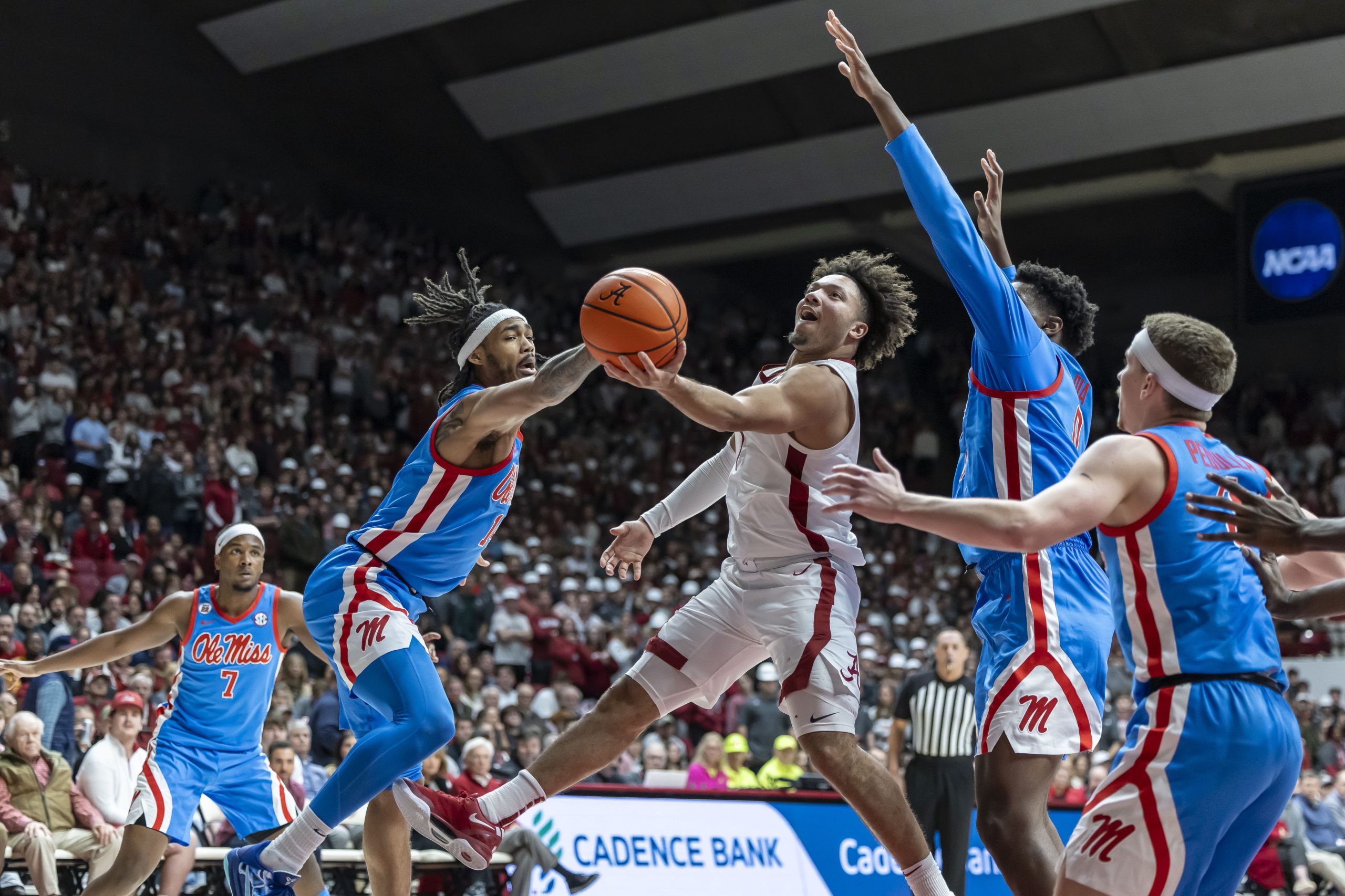
The $2.8 billion settlement in the House v. NCAA case will compensate tens of thousands of Division I athletes who were previously barred from profiting off their name, image and likeness, or NIL.
Jake Wimberly, program director for ESPN Radio in Madison and Jackson, supports athletes getting paid but sees the NIL system as a disingenuous way for universities to avoid classifying players as employees. He cited LSU’s national championship winning baseball team as an example, which enjoys a roster that reportedly cost $10 million to put together.
“Most of that money was not name, image and likeness,” Wimberly said. “That is pay-for-play, because there’s not enough burgers, shirts or swag out there to get you $10 million.”
The settlement also allows schools to directly pay athletes, with revenue-sharing caps starting around $20 million per year per institution. Athletic directors at Mississippi’s Division I schools have largely welcomed the settlement and the opportunities it offers to support student-athletes and sustain their school’s programs.
University of Mississippi Athletics Director Keith Carter highlighted new support services available under the agreement, including enhanced mental health care, nutrition support and extended medical coverage.
“While the past few years have seen Ole Miss reach historic heights, we look forward to embracing a new model in college athletics and finding some much-needed stability,” Carter said in a statement.
At Mississippi State, Athletics Director Zac Selmon called the settlement a “pivotal moment” and said it brings much-needed clarity for programs navigating athlete compensation.
“While there are still questions to answer and new territory ahead, this decision allows us to officially move forward with plans to share revenue with our student-athletes,” Selmon said in a statement.
However, concerns remain about the future of non-revenue and women’s sports. A group of female athletes has filed a legal challenge to the settlement, arguing that the proposed distribution model unfairly favors men’s programs and violates Title IX protections.
They also warned that the financial constraints brought on by the need to offer top athletes competitive pay rates, colleges will begin cutting non revenue sports programs and that shift will disproportionately affect female athletes. That same sentiment was shared by Gov. Tate Reeves during a press conference earlier this month.
“There are going to be fewer female collegiate athletes in the future because of this settlement, and I think that’s a crying shame,” Reeves said.
Wimberly thinks many Division 1 schools need to rethink how they fund athletics, regardless of the settlement.
“A lot of universities are upside down, even some in the Southeastern Conference, because they overspend,” Wimberly said. “They’re going to have to balance a book and ask, ‘Does it make sense to keep supporting this sport with scholarships, equipment and meals, or should we cut it?’”
If the athletes’ appeal succeeds, it could delay settlement payouts for more than a year and force a major overhaul of how colleges allocate athletic funds by gender.
NIL
University of Minnesota Athletics
MINNEAPOLIS – Minnesota softball head coach Piper Ritter has announced the addition of transfer Cassie Johnson (Ankeny, Iowa) to the 2025–26 roster. Johnson joins the Golden Gophers after redshirting last season at Texas Tech. “I chose Minnesota because the campus feels like home, and the coaching staff is amazing,” Johnson said. “I know I’ll have […]
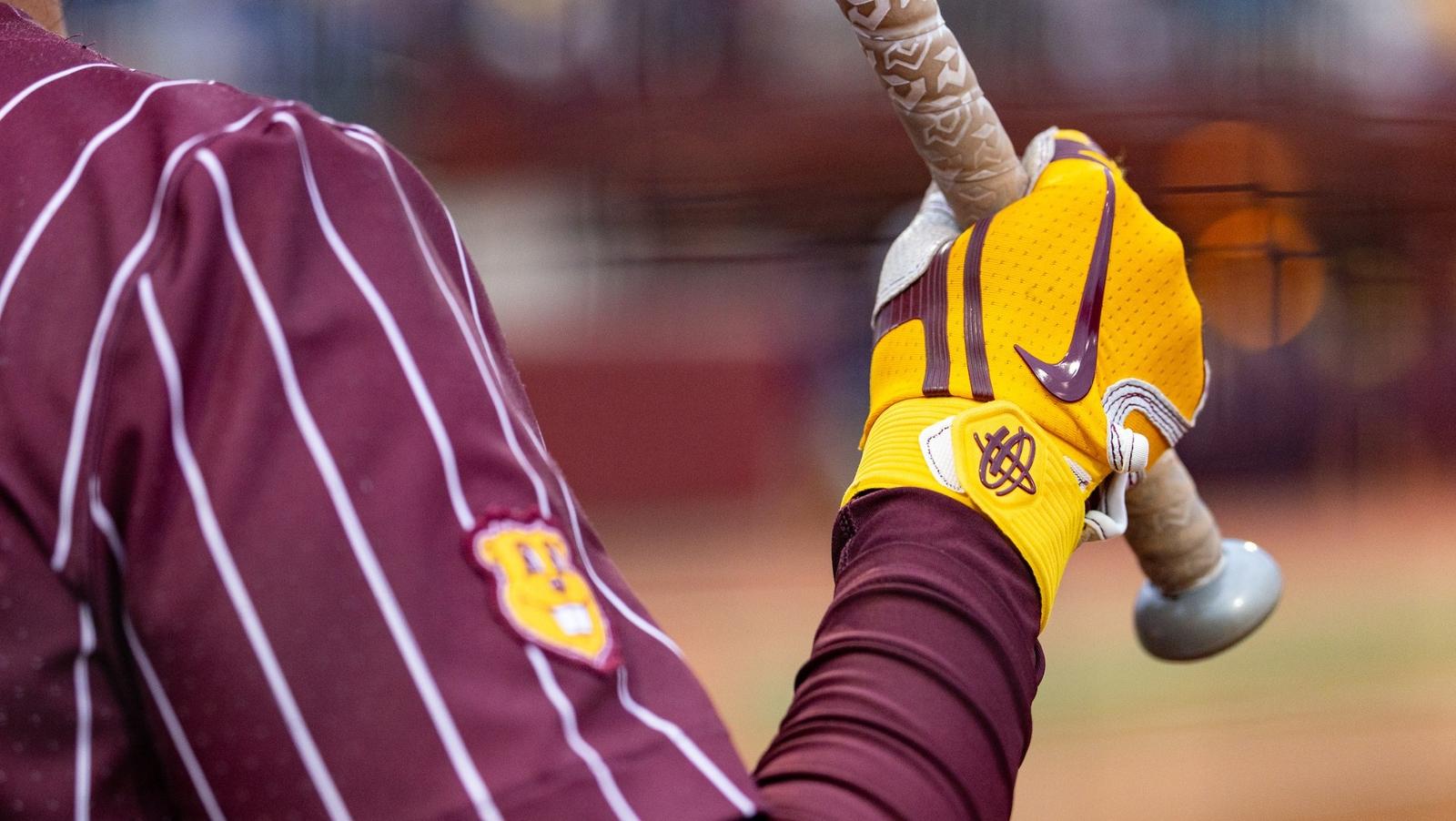
“I chose Minnesota because the campus feels like home, and the coaching staff is amazing,” Johnson said. “I know I’ll have great opportunities during my time here.”
This past season, Johnson and the Red Raiders knocked off Oklahoma to reach the Women’s College World Series championship, where they fell to eventual champion Texas.
Before her time in Lubbock, Johnson played three seasons of varsity softball at Ankeny High School, graduating in 2023. The catcher was an all-conference, all-area and all-state selection that year. She helped lead Ankeny to a seventh-place finish at the state tournament in 2023 and a fifth-place finish in 2024.
Johnson also competed with Iowa Premier, placing sixth at nationals in 2024 and fourth in 2023. According to Extra Inning Softball, she was ranked the No. 17 catcher nationally in the 2024 class.
She is the daughter of Jay and Laura Johnson and has two siblings, Abby and Haylee.
NIL
EA College Football 26 Road to Glory deep dive details, features
Jeremiah Smith, Ryan Williams on cover of EA Sports College Football ’26 EA Sports chose Ohio State’s Jeremiah Smith and Alabama’s Ryan Williams to be on the cover of College Football ’26. We talk to the athletes about what this moment means to them. (This story has been updated to add new information.) The latest […]
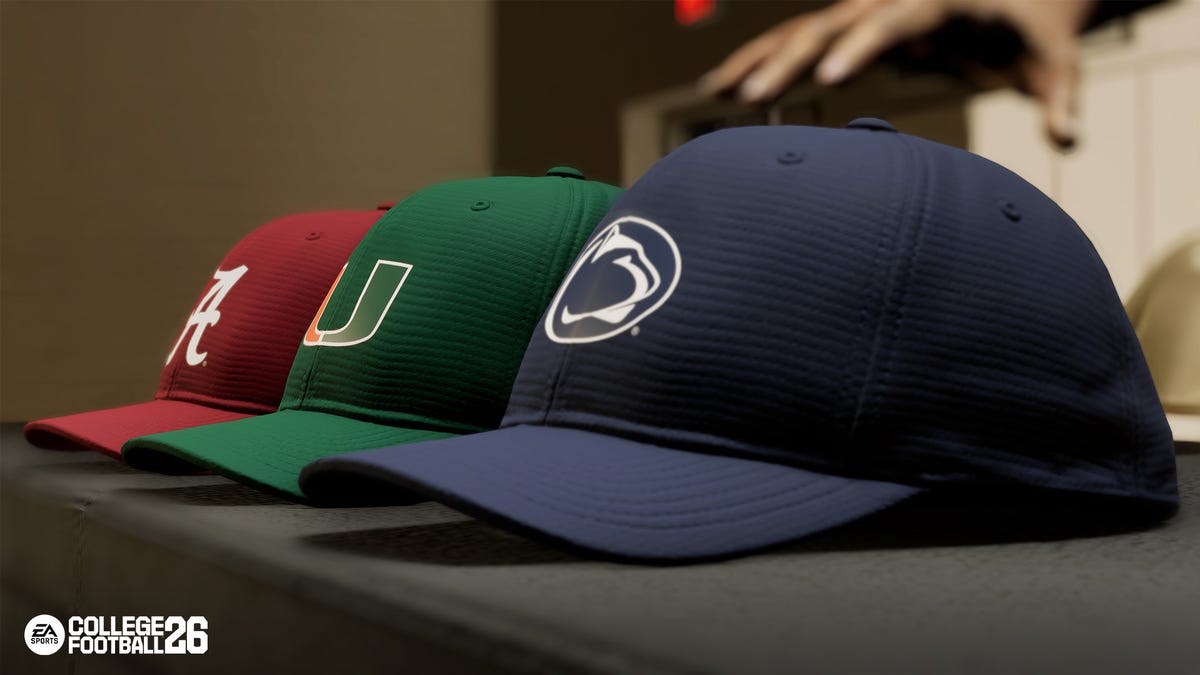
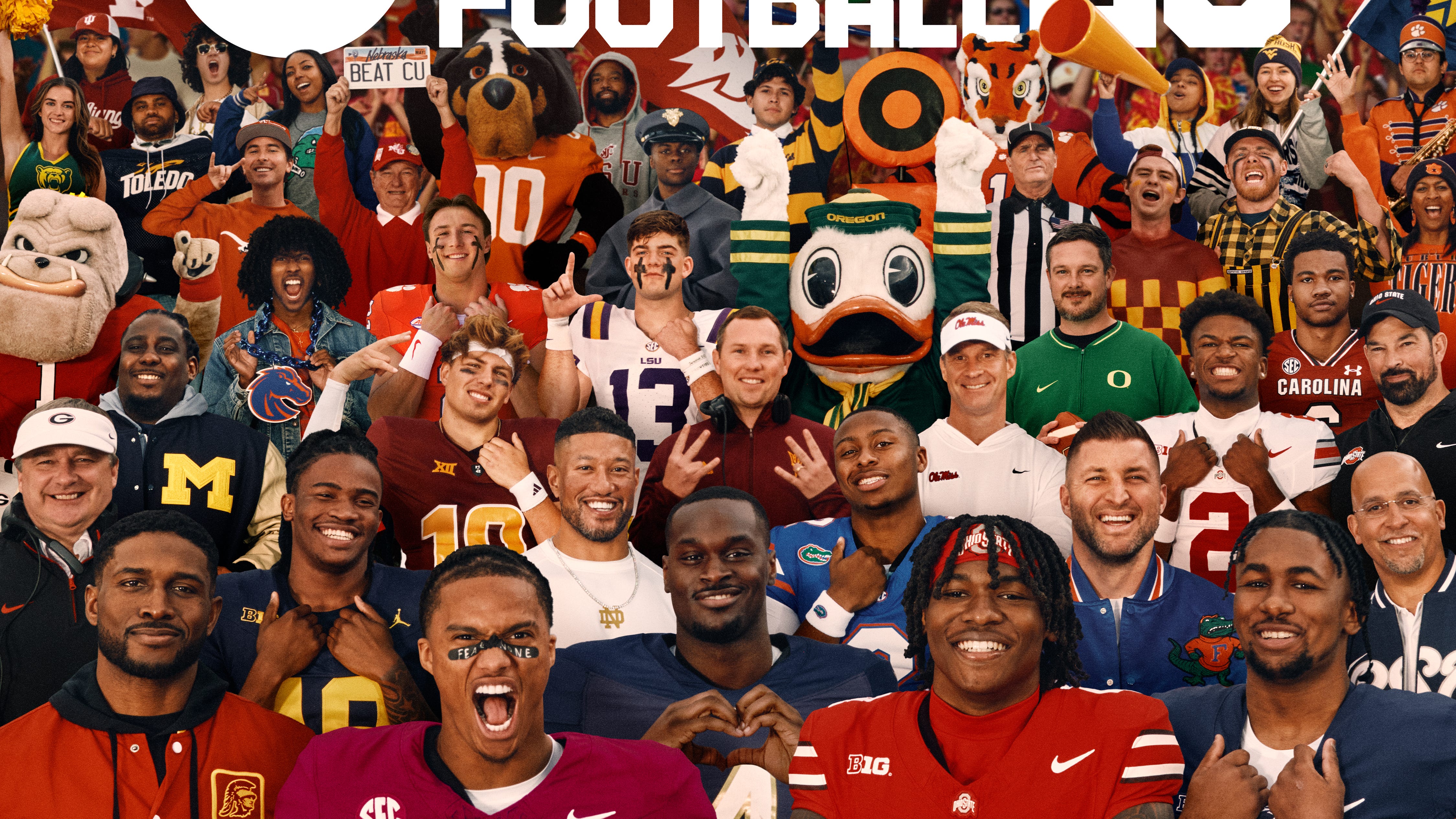
Jeremiah Smith, Ryan Williams on cover of EA Sports College Football ’26
EA Sports chose Ohio State’s Jeremiah Smith and Alabama’s Ryan Williams to be on the cover of College Football ’26. We talk to the athletes about what this moment means to them.
(This story has been updated to add new information.)
The latest deep dive into College Football 26 is here, and it’s one players have been eagerly anticipating. EA Sports revealed details into its Road to Glory mode, which lets gamers create a player and bring him up through a high school recruit into a college football champion or Heisman Trophy winner.
Fans of the popular video game have been clamoring for details since the Orlando-based company announced a high school football component would be part of CFB 26. There won’t be full games or any real high school teams in the game — though you could create one in Team Builder — but players will be able to make their highlight tape to land a spot on the college team of their choice.
“In listening to our players, a few clear themes emerged,” EA Sports said in its Campus Huddle news release. “First, players wanted a more meaningful recruiting experience — more agency in deciding where they go to school, and more control over the moments that lead there. Second, while Coach Trust was a strong foundation for getting on the field, players wanted more tension, more rewards, and more to chase once they earned the starting job. And third, players wanted a better way to track their achievements and celebrate everything they’d earned across their career.”
After they play their way through their on- and off-field journey in college, players can choose to continue their careers in the NFL by exporting them to Superstar mode of Madden 26.
Watch College Football 26 Road to Glory deep dive
Here’s a look at the new features in Road to Glory:
Road to Glory create-a-player options
Players can choose start anywhere from an elite five-star recruit to an unheralded two-star who will have to work his way up to stardom. There are five positions available with a variety of archetypes for each:
- Quarterback
- Running back
- Wide receiver
- MIKE linebacker
- Cornerback
Your player type and choice in high school will determine what schools will be interested in recruiting you. Teams in your player’s home state will have higher interest.
There are more customization options when creating your player, including more than 40 throw styles and different ways for players to run and carry the ball.
High school football in College Football 26
Road to Glory begins with your player building his college recruiting tape. Players will play five high school games made up of four moments with specific goals. How well you perform in those moments, as well as how you answer questions from coaches scouting you, will determine how successful you will be in getting a scholarship offer from the college of your choice.
Here’s how it works:
- High School Moments: In each game, players can choose four moments to play out on the field. To carry them out, you can choose the plays from a playbook tailored to your player’s archetype and make whatever pre-snap adjustments you need. The Campus Huddle laid out one quarterback scenario in which the player’s arm is tested against the area’s top cornerback. There were two goals for the situation early in the quarter:
- Avoid an interception and pass breakup by cross-regional rival (worth 50 points)
- Complete passes from the pocket for 30+ yards total (200 points)
- Assessed Tape Score: How well players hit their goals throughout the high school games will determine their tape score with each college. To earn an offer from that school, players will have to reach the team’s required score. Different college styles will invoke different multipliers for each goal in high school moments.
- Highlight Moments: Schools will send specialized moments that, if achieved in games, will significantly boost your player’s chance of landing an offer from them. These challenges are tougher than the standard high school moments. The example in the Campus Huddle for a quarterback was to complete a 50-yard pass.
- Recruiting Board: Players can have up to 10 teams on their favorites list, which can be altered throughout the high school process. Check out each team’s evaluation of your player to see their projected role, coach boosts and tendencies, and the other recruits they’re pursuing among 4,100 in the system.
- Star rating: Players can rise from a two-star recruit all the way to a five-star throughout high school mode, and vice versa. After the five games, your final rating will determine the attributes and offers your player will have in college. Those who finish as four- or five-star recruits will gain an extra ability.
- High School Scenarios: Players will face dynamic interactions with coaches and classmates, as well as off-field challenges that will count toward what schools will take them. For instance, telling a coach his team is your top choice will boost your odds with them, but hurt your chances at the others recruiting you. You can also choose how to want to study for a test or who to take to homecoming.
- Senior Night: Your last game in high school includes a special runout and ends with a decision for your final three colleges to choose from. That will determine the hats on the table at your player’s signing day.
Road to Glory recruiting, signing day in College Football 26
Initial scholarship offers in CFB 26 can improve or deteriorate depending on how players perform over the course of the high school portion. Higher-tier scholarships come with more bonuses in college, both on and off the field. Offers can be revoked if your play diminishes or if the school gets a commitment from another player at your position.
To secure a scholarship tier from a school, you can verbally commit to their offer. After that, bonuses can’t change for better or worse. You can decommit to improve your bonuses, but it will increase the Tape Score required for the next school to extend its offer.
When the player has selected their top three colleges and have their Signing Day ceremony, they can choose to just pick up the hat of their choice, fake out the audience or even make a big show before finally heading off to the college portion of Road to Glory.
New Road to Glory features: Coach happiness, wear and tear
In college, there are a host of new features, especially in the off-field portions. Here’s a rundown:
- Coach Trust: In College Football 25, the mechanic helped get players on the field and into the starting lineup. This year, accumulating trust lets players call audibles, pick more plays until the full playbook is unlocked and more. Coach Trust is gained through practice and games, both played and simulated.
- Coach Happiness: The new week-to-week system reacts to in-game performance and off-field decisions. High happiness lets players earn Coach Trust faster. Low happiness could lead to the player getting benched or demoted. That would unlock a position battle to get their spot back, but only once the Coach Happiness returns to at least neutral. Happiness is determined by on-field performance, practice performance, GPA and leadership ratings, and how you respond in off-field scenarios.
- Wear and Tear: Player health now deteriorates over the course of the season and can also carry over into future seasons. Season and career health pools will determine how much injuries weigh on players, and the size of your pool at the end of the season will determine how full it gets next year. Making certain decisions in your weekly agenda will determine how well your player holds up with injuries.
- NIL: Signing NIL deals can now give players skill points, meaning you can improve your stats without risking injury in training or in games. However, accepting NIL deals also means spending energy points during the week, meaning you’ll have to sacrifice other activities, like school.
- Scenarios and dilemmas: Off-field choices players are confronted with will be reflected in Coach Trust and Happiness, among other meters, and in-game coach challenges now offer XP as a potential reward.
- First-person runout: Before games, players will be treated to a first-person vantage point for the team’s runout onto the field. The Campus Huddle showed off a Virginia Tech player running out to “Enter Sandman,” replete with fans chanting the chorus. Those who made a player for Florida will get to rub the gator head before taking the field.
College Football 26 release date
College Football 26 will have its wide release Thursday, July 10. Early access will be available for those who pre-order the Deluxe Edition or MVP Bundle on Monday, July 7.
College Football 26 price
The Standard Edition of College Football 26 will cost $69.99. The Deluxe Edition costs $99.99, and the MVP Bundle, which includes the Deluxe Edition of both CFB 26 and Madden 26, is $149.99.
NIL
Alabama Ranked No. 1 in EA Sports College Football 26
With the introduction of legal NIL in college football in 2021 came the conversation of the revival of the beloved college football video game, which was discontinued following multiple lawsuits surrounding NIL in college football in 2014. In 2024, college football video game fans’ dreams were recognized, with EA Sports returning the game […]
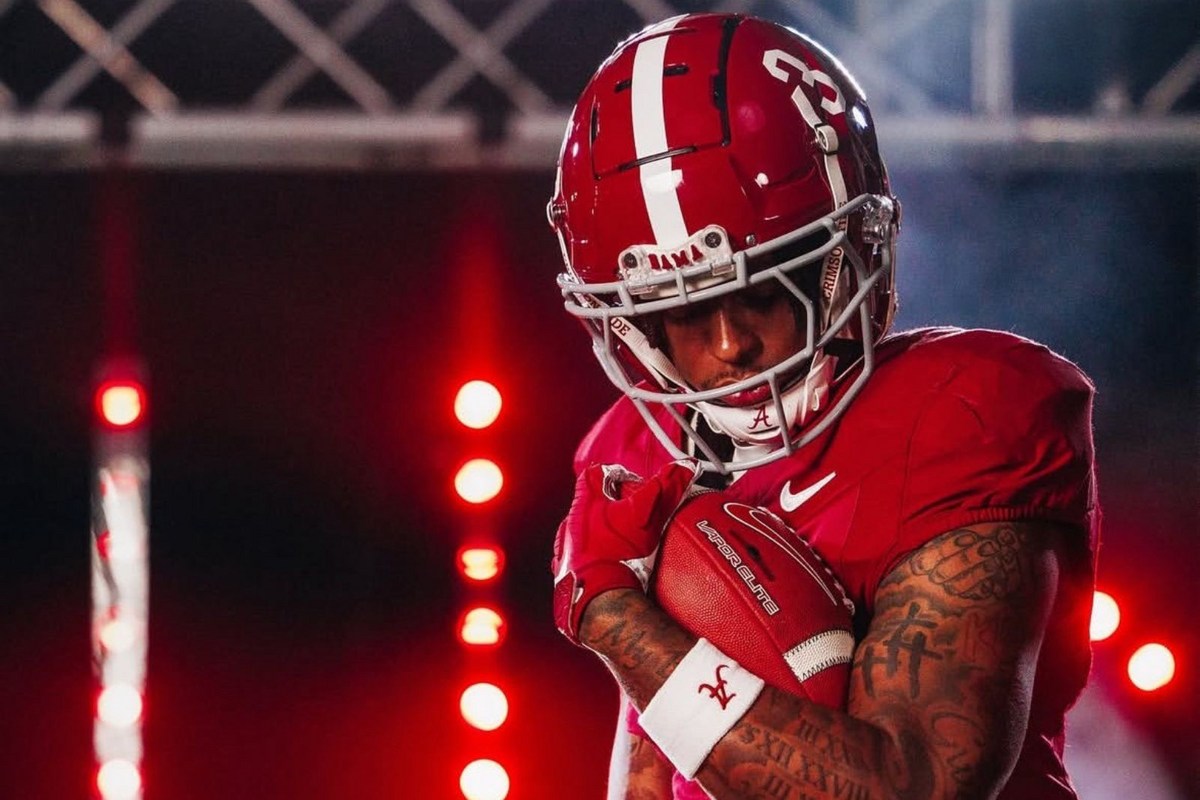
With the introduction of legal NIL in college football in 2021 came the conversation of the revival of the beloved college football video game, which was discontinued following multiple lawsuits surrounding NIL in college football in 2014.

In 2024, college football video game fans’ dreams were recognized, with EA Sports returning the game under a new title, “EA Sports College Football”.
2024 was a huge success, with EA selling over five million copies of the game. Alabama was a fan favorite thanks to quarterback Jalen Milroe, who was categorized as “broken” in the game with his cannon of an arm and ability to run the football.
The game is officially returning for 2025, with many fans expected to play with the Crimson Tide once again, thanks to some high ratings for Kalen DeBoer’s team.
According to EA Sports, Alabama is the top-ranked team in the video game, with an overall rating of 89.
Four other SEC teams join Alabama in the top ten, with Texas being ranked an 88 overall, Georgia ranked an 88 overall, Texas A&M ranked an 88 overall, and LSU ranked an 86 overall.
Defensively, Alabama once again boasts the top rating in the game with a 96 overall ranking. The Crimson Tide returns several key starters on defense, including four players who started multiple games in the secondary last season.
On offense, Alabama will have some work to do to increase its ranking, with the Crimson Tide ranked as the No. 7 overall offense with an 89 overall rating. The lower rating on offense is likely due to replacing two-year starting quarterback Jalen Milroe, who flashed his dynamic playmaking ability in every game he played.
For the full top 25, check out EA Sports College Football here.
Wyatt Fulton is the Tide 100.9 DME and Brand Manager, primarily covering Alabama Crimson Tide football and men’s basketball. For more Crimson Tide coverage, follow Wyatt on X (Formerly known as Twitter) at @FultonW_.
Alabama Thrashes LSU 42-13 in Death Valley
Gallery Credit: Wyatt Fulton
Alabama Football 2025 A-Day
Gallery Credit: Wyatt Fulton
Alabama is Upset by Michigan in 2024 Reliaquest Bowl
Gallery Credit: Wyatt Fulton
NIL
Blum named Director of NIL Development for Cyclones | News, Sports, Jobs
Brent Blum AMES — Cyclone Sports Properties, in partnership with Iowa State Athletics and Learfield Impact, has announced the appointment of Brent Blum as the new Director of Name, Image and Likeness (NIL) Development, Jake Lovell as NIL Partnerships and Operations Coordinator and MaryKate Walling as NIL Content Producer. “We are excited to launch this […]


Brent Blum
AMES — Cyclone Sports Properties, in partnership with Iowa State Athletics and Learfield Impact, has announced the appointment of Brent Blum as the new Director of Name, Image and Likeness (NIL) Development, Jake Lovell as NIL Partnerships and Operations Coordinator and MaryKate Walling as NIL Content Producer.
“We are excited to launch this innovative initiative with Learfield as we navigate this new world intercollegiate athletics enters starting July 1,” ISU Director of Athletics Jamie Pollard said. “We believe that these positions are a continued evolution of our long-standing partnership and allow us to create additional opportunities through existing and new corporate partners.”
Learfield Impact integrates the addition of these three on-campus NIL leadership positions, innovative technology in the form of Learfield’s Compass NIL dealmaking platform, and the Emmy Award-winning Learfield Studios content team into an unmatched full-service NIL offering. This powerful combination seamlessly generates authentic dealmaking and creates opportunities for influential storytelling content between student-athletes and brand partners.
In this newly created role, Blum will help oversee the university’s evolving NIL strategy, working closely with student-athletes, coaches and donors, as well as the Iowa State Foundation and corporate partners to build innovative and sustainable support. His work will focus on aligning the athletic department’s NIL vision with national best practices while staying true to the culture and values of Iowa State.
Blum currently serves as Executive Director of the We Will Collective, where he has helped raise over $12 million in support of Iowa State student-athletes, backed by contributions from more than 10,000 individual donors and area businesses.
“Cyclone Nation’s involvement is as important as ever as we tackle this transition in college athletics,” Blum said. “This next chapter gives us the opportunity to build a more unified and long-term NIL infrastructure for Iowa State. In the short term, continued support of We Will is vital as we move forward.”
Lovell, who has been a member of the CSP staff for three years, will assist Blum in fulfilling NIL sponsorships and Walling, who received both her undergraduate and master’s degrees from Iowa State while working as a content producer for the Cyclone Football program, will produce NIL-related content for CSP sponsors.
With the House settlement approved by Judge Claudia Wilken earlier this month, the Iowa State Athletics Department will now provide direct financial support to Cyclone student-athletes on top of the world-class education and other benefits that they currently receive. Nearly every Cyclone student-athlete will receive a financial payment from the University for their NIL rights beginning on July 1.
Iowa State Athletics will provide the maximum revenue-sharing amount allowed, currently projected to be $20.5M for the 2025-26 fiscal year, by the House settlement to its student-athletes. The We Will Collective will begin transitioning its members to the We Will Fund that will be housed within the ISU Foundation next month. Contributions to the We Will Fund will allow donors to invest in the support of student-athletes while helping ISU ensure future success of its championship-caliber programs.
“The Iowa State fan base has long-been recognized as one of the nation’s most-loyal, and their continued generous support of the We Will Fund will be critical as we move into college athletics’ new era,” Pollard said. “We are grateful for all of our fans who have contributed to the We Will Collective over the last few years and it is our sincere hope they continue that support as we transition to the We Will Fund to ensure that our programs are positioned for greater success in this new era.”
NIL
Money Matters, Part II
Story Links Intercollegiate athletics have entered a historic new era after judge Claudia Wilken recently granted final approval to the $2.8 billion settlement of the class-action antitrust lawsuit House v. NCAA. Over three Fridays, we are examining the immediate and future implications of the House Settlement and what it means for WVU athletics. This is […]


Story Links
Intercollegiate athletics have entered a historic new era after judge Claudia Wilken recently granted final approval to the $2.8 billion settlement of the class-action antitrust lawsuit House v. NCAA. Over three Fridays, we are examining the immediate and future implications of the House Settlement and what it means for WVU athletics. This is the second installment.MORGANTOWN, W.Va. – Throughout its long and storied history, West Virginia University athletics has encountered critical pivot points in its existence.In the early 1920s, Athletic Director Harry Stansbury’s willingness to invest in a new football stadium put Mountaineer football on a much larger stage, and then a few years later, he was able to successfully fight off state superintendent of schools George Ford’s desire to make WVU a part of the state college system under one governing board, which would have placed West Virginia’s flagship university on par with its much smaller peers.Stansbury rightfully argued that by doing so, and with WVU joining the West Virginia Athletic Conference in the process, it would be catastrophic to the prestige of the University. Forward thinking alums and state officials agreed.In the late 1960s, upon the urging of football coach Jim Carlen, West Virginia University left the Southern Conference and committed to a big-time Eastern independent schedule that also included intersectional games against California, Stanford, Illinois, SMU, Kentucky, Oklahoma and Arizona State.When Carlen would talk to his athletic director Red Brown about this, he framed it in a way that made it clear that the University’s status was on the line.”Mr. Brown, I know you are a basketball man and everything, but we’re in a different world now,” Carlen told him. “These people here need something to grab hold of. You’ve got to help me here a little bit now. “We have to get out of the Southern Conference because we’re better than that. I want to play Kentucky and Tennessee; I want to play schools people want to see us play, and I want to go to bowl games every year,” he said.Brown, too, had big aspirations and after years of asking, he eventually convinced the state to fund a new basketball arena in 1967.Forward-thinking West Virginians were on board with those things, as they were in the mid-1970s when the athletic department reached another pivot point after it became clear that aging Mountaineer Field needed replaced.Many wanted the old stadium remodeled with a 10,000-seat deck constructed on one side to increase its capacity to 45,000. Coach Frank Cignetti was part of a group favoring to build a new stadium in another part of town, arguing the viability of Mountaineer athletics was at stake.Forward-thinking people in the state capitol demanded that a new stadium be built in a different part of town.”What this thing finally came down to was a group in Charleston that really wanted to build a new stadium, and that sort of put an end to renovating the old stadium,” the late Cignetti recalled in 2020, two years before his death. “There were a lot of people at the time questioning if West Virginia could really make it big time in football, but if you look at the success Don Nehlen had there and the coaches after him, they wouldn’t have achieved that without that stadium.”Again, the courageous forward thinkers were on the right side of history, as was the case in 2010 when President Jim Clements and Athletic Director Oliver Luck steered West Virginia University out of the Big East and into the Big 12 Conference.The move kept WVU at the big table during the last decade when conference realignment turned college sports upside down, and then more recently, with the realignment that followed after the departures of Texas and Oklahoma from the Big 12 to the SEC.Today, the recent House Settlement is requiring another seismic landscape change for West Virginia University. Director of Athletics Wren Baker was hired in late November 2022, in part, to help guide Mountaineer athletics through a new era of uncertainty in collegiate sports fueled by existential legal challenges regarding student-athlete compensation and name, image and likeness (NIL) rights.
Director of Athletics Wren Baker was hired in late November 2022, in part, to help guide Mountaineer athletics through a new era of uncertainty in collegiate sports fueled by existential legal challenges regarding student-athlete compensation and name, image and likeness (NIL) rights.
The recent settlement approved by Judge Claudia Wilken stipulates that colleges and universities can directly pay athletes approximately $20.5 million per year beginning in 2025, increasing by 4% annually over the next 10 years.
For West Virginia University, that means roughly 20% of its entire yearly athletic budget will now go toward student-athlete compensation.
That’s a significant chunk of money!
Consequently, Baker’s choices basically came down to either fully funding the revenue share or not fully funding it and relegating Mountaineer athletics to second-class status, which was not really an option. So, by choosing to fully fund it, his next major decision was how to do it. He could either cut staff and programs to make up the difference or explore additional ways to increase revenue.
Some schools have chosen to cut staff and sports, a course Baker considered, but had he done so, it would have been like cutting off an appendage because the overall size of WVU’s athletics department is much, much smaller compared to its power conference peers.
“We have less people than any other school in the Big 12 in terms of full-time employees, and generally, our people are not as well-paid as a lot of our colleagues around the country, so we are not in a position where we can cut 100 people like some schools have,” Baker said recently. “That would be about half our workforce.
“We don’t really have that option.”
To chart the appropriate course, Baker did his research and conducted a thorough analysis of WVU’s athletics operations, taking a robust look at the entire department.
In addition to the department increasing athletic revenue by 5 to 6% annually during the three cycles that Baker has been here, his research concluded that relative to what WVU athletics currently generates in terms of parking, ticketing, media rights and fundraising, its performance has been on par or ahead of many of its power conference peers.
One critical aspect that hurts the department, as Baker has indicated on many occasions, is a lack of premium seating at Milan Puskar Stadium and the WVU Coliseum.
“That is something we have to fix if we want to grow,” he admits.
Baker noted other aggressive initiatives are now underway to increase the department’s budget.
“When people see us do things like restructuring men’s basketball seating or looking at our parking allotments, we had a lot of people over the years been given grace on way more parking passes than they are actually allotted,” Baker mentioned.
“Well, the problem with that is a lot of those parking passes have a donation requirement, so everybody who is getting X amount, when we did an audit, it amounted to hundreds of thousands of dollars (in lost revenue),” he explained.
“I know this upsets people who feel like, ‘Hey, I’ve been with you, and I’ve been loyal’ but the reality is, we are not in a position to make decisions to forgo revenue anymore. And in the past, we’ve done that for the sake of trying to keep everyone happy.”
Baker said it is now imperative that Mountaineer athletics get market value for everything that can be offered.
“We can’t do that with freebies and handshakes,” he said. “If you look at our budget overall, relative to our conference, it remains in the bottom quartile, so we run a leaner ship.”
The most striking aspect of Baker’s findings was related to campus investment. It was significantly lower than most of West Virginia’s Big 12 peers and many of its power conference and regional peers as well.
As one University official once told me, “Mountaineer athletics has been West Virginia University’s best customer for years.”
Going back to the 1980s, when Don Nehlen’s football program was enjoying unprecedented success, the popular catchphrase within the department was “self-sustaining.”
Naturally, it was a source of great pride. But this unique designation came with a significant cost to athletics, in real dollars and potential investments toward the future.
About five years prior to West Virginia playing Notre Dame in the 1989 Fiesta Bowl for the national championship, athletics began paying the University for its tuition waivers. Through the years, the cost for those tuition waivers has ballooned to more than $10 million per year. Ed Pastilong, WVU’s athletic director at the time, had no other choice but to fundraise to pay for the scholarships awarded to student-athletes, diverting potential revenue for capital improvements to general operating costs.
Averaged out over decades, those tuition waivers amount to hundreds of millions in real dollars Mountaineer athletics has transferred to the University’s general budget.
Additionally, a decision was made sometime in the late 1980s that a portion of West Virginia University’s bowl revenue was to be allocated to the University, which became a factor in 1994 when the department was considering adding premium seating underneath the press box at Mountaineer Field after playing Florida in the Sugar Bowl.
Instead of constructing suites from one end of the stadium to the other, the decision was made to build only 12 at a cost of $2.5 million. The stated goal of the new stadium suites at the time was to create additional income to offset scholarship expenses for Mountaineer athletics. Had there been 36 suites constructed instead of 12, that would equate to a minimum of at least three times more revenue through the years, not to mention the financing for them was to be paid off by 2003.
Funding the construction of additional premium seating at the stadium and new premium seating at the WVU Coliseum today is going to be a massive undertaking.
According to published reports, the Group of 5 programs that were recently added to the Big 12 are being subsidized by as much as $40 million per year, and if that amount continues, combining that with their future Big 12 media rights distributions means their athletic budgets will easily surpass WVU’s.
In one extreme instance, former Big East member Rutgers was subsidized $70 million in 2024 to cover its athletic budget while competing in the Big Ten Conference, according to NJ.com. In the meantime, Rutgers has also invested hundreds of millions in capital improvements to the school’s basketball arena and football operations center.
It is clear Rutgers is willing to invest in its athletics program to maintain the prestige of being aligned with some of the most elite universities in the country in the Big Ten.
Baker admits he’s had some hard conversations with campus leadership about the unequal playing field Mountaineer athletics has been required to navigate through the years.
“We’re assuming we’re going to out-resource the (Group of 5 schools) coming into the league, but if their campus investment stays the same, and they begin getting full Big 12 revenue distribution, they are going to zoom right past us,” he explained. “We are going from being eighth or ninth out of 10 in a 10-member Big 12 to 14th or 15th in a 16-member Big 12.
“Now, we don’t have to have the biggest budget in the Big 12, but we do have to have a budget that’s somewhere in the median,” he added.
What the House Settlement is doing today is requiring those who support and love West Virginia University to make a choice – do they want to continue to have a first-rate athletics program funded on par with its peers?
The years of Mountaineer athletics punching above its weight class and being asked to do more with less are likely over if WVU supporters desire consistent success and remaining relevant in the college athletics landscape.
In 2017, when Shane Lyons was athletics director, he commissioned Tripp Umbach to do a study on the economic impact WVU athletics has on the state of West Virginia and Monongalia County.
Those numbers were eye opening.
The total economic impact for the state was $302.7 million in 2017, which adjusted for inflation, equates to nearly $400 million today. The economic impact to Monongalia County was $78.8 million, or about $103 million in 2025.
Clearly, a great deal is riding on the financial health and well-being of Mountaineer athletics. The state’s identity and branding are intertwined in the successes West Virginia University athletics enjoys today.
Baker, whose career in college sports has taken him and his young family to many different parts of the country, is keenly aware of this.
“I would sit here and espouse the value of successful athletics for any campus, but I think in this state, it’s more important than any other state in the entire country,” he explained. “I think people associate the brand and the success of our state with the success of WVU and WVU athletics, and I would throw WVU Medicine in there as well.
“For our state to be in a healthy economic position, it needs WVU, WVU Medicine and WVU athletics to also be in really good condition. What is that worth? It is going to require some kind of investment from everyone.”
Today, because of the House Settlement, Mountaineer athletics has reached another critical pivot point in its history.
When these moments have arrived in the past, the forward-thinkers have usually prevailed.
Next Friday, our final installment will explore the potential of the recently launched Gold & Blue Enterprises.
-

 Motorsports2 weeks ago
Motorsports2 weeks agoNASCAR Weekend Preview: Autódromo Hermanos Rodríguez
-

 Motorsports2 weeks ago
Motorsports2 weeks agoNASCAR Through the Gears: Denny Hamlin has gas, a border needs crossing, and yes, that’s a Hemi
-

 High School Sports3 weeks ago
High School Sports3 weeks agoHighlights of the Tony Awards
-

 Motorsports2 weeks ago
Motorsports2 weeks agoNASCAR Race Today: Mexico City start times, schedule and how to watch live on TV
-

 Health2 weeks ago
Health2 weeks agoGymnast MyKayla Skinner Claims Simone Biles 'Belittled and Ostracized' Her amid Riley …
-

 Professional Sports3 weeks ago
Professional Sports3 weeks agoUFC 316
-

 NIL2 weeks ago
NIL2 weeks agoTennessee law supersedes NCAA eligibility rule
-

 College Sports3 weeks ago
College Sports3 weeks agoFisk to discontinue history-making gymnastics program after 2026 | Area colleges
-

 Sports2 weeks ago
Sports2 weeks agoCoco Gauff, The World's Highest
-
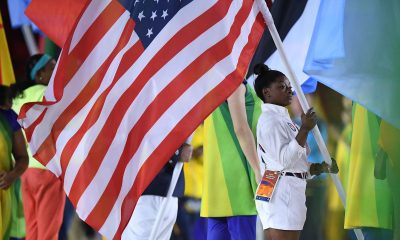
 Health3 weeks ago
Health3 weeks agoOlympic great Simone Biles shares mental health journey on first Hong Kong visit



































